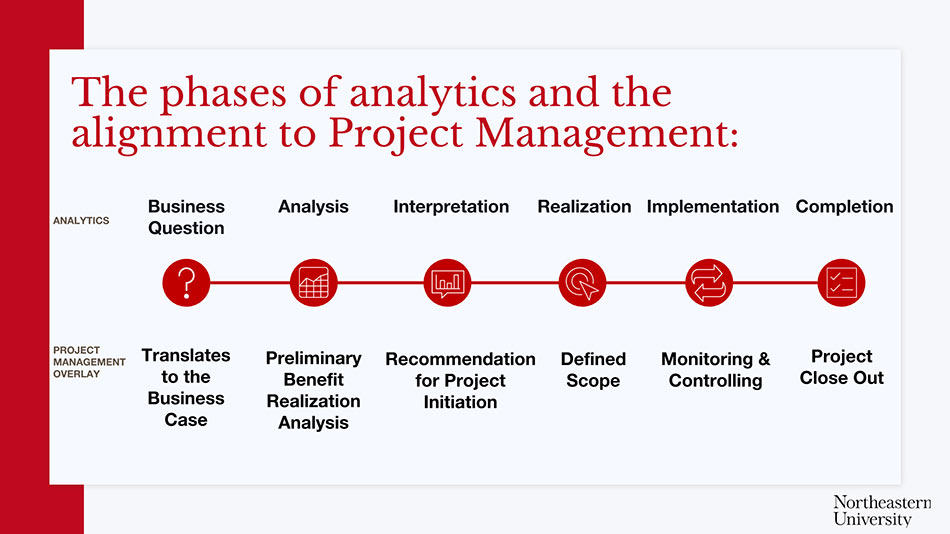Data analysts have never been in higher demand and are viewed as organizational assets given the critical role they play in analyzing data and transforming large data sets into insights. Those insights are used by decision-makers to set critical decisions that impact enterprise-wide initiatives.
But while data analysts are incredibly smart and talented individuals, they can sometimes have a hard time communicating their takeaways and insights in a way that affects change within their organization.
Though they may have valuable data to offer, by failing to communicate it in a way that their colleagues and key stakeholders will best understand, they often find their insights overlooked, misunderstood, or ignored.
If you’re a data analyst, chances are good that at one point or another, you have probably asked yourself a question like: How can I achieve a greater understanding in my work? How can I demonstrate value to my organization? How can I truly affect change and development at work? How can I get the recognition that I really deserve at work?
One way that you can achieve a greater understanding in your work—and, therefore, affect more meaningful discussions and change—is by taking a page out of the project manager’s playbook by aligning the steps of the data analysis lifecycle to the traditional steps in project management.
“As an analyst, you really need to be, in a sense, bilingual,” says Uwe Hohgrawe, assistant teaching professor and lead faculty member in the graduate analytics program at Northeastern’s College of Professional Studies. “You need to, of course, have a competency in analytics and a firm understanding of your organization’s domain, to be able to translate analytics into action.”
What Data Analysts Can Learn from Project Managers
Most key stakeholders within an organization will have at least a rudimentary understanding of the project management lifecycle: They know what it takes to bring a project from ideation through to completion. They probably don’t, though, have much exposure to the typical analytics lifecycle.
The easiest way for you, as an analyst, to bridge this gap in understanding is to tie the different phases of your analytics project to the general phases of project management. Luckily, data analysis and project management can each be broken into six main phases, which roughly correspond to each other.

The six phases of the analytics lifecycle roughly correspond with project management as follows:
1. Business Question = Business Case
In order to have a successful analytics project that will be able to translate into real, actionable insights for your organization, you must start by asking the right question. In enterprise analytics, this is known as the business question. It is the question that all of your data and analysis is going to be focused on answering.
In project management, this correlates to the business case, which is essentially the “why” behind a project. What does the organization hope to achieve through a project? This is often expressed in terms of solving a particular problem, or as ROI.
By thinking about a business question in terms of a business case, you will be better able to explain to colleagues and key stakeholders exactly why a particular analytics project matters.
2. Analysis = Preliminary Benefit Realization Analysis
Once you’ve identified the business question, you enter into analysis, where you use various tools and strategies to collect and interpret data.
In project management, once this data is collected, it can be used to conduct a preliminary benefit realization analysis. This analysis aims to explain what benefit an organization will achieve—increased revenue, more retained customers, etc.—if a project were to be initiated and completed.
3. Interpretation = Recommendations for a Project
After you’ve collected the data, you can begin to interpret it as it applies to the business question that was identified in the first phase. This correlates to the phase in project management where recommendations for a project are actually made.
If you want your data and interpretations to be leveraged in this phase, it is crucial that you go back to the initial conversations that you had with the key stakeholders and use that information to flavor your interpretations of the data, especially when communicating the results back to the stakeholders. This is not to say that you should skew the data to align with a certain goal or desired outcome; it simply means that, as you interpret the data, you should do so in a way that clearly reflects back upon the initial goals and objectives that your stakeholders care about.
Phrasing your interpretation in terms such as, “Looking at the data, we can see X and Y, which may explain [Business Question],” for example, can be incredibly effective in allowing your data to translate into actionable steps for the organization.
4. Realization = Recommendations for a Project
Once the interpretation is complete, you enter the realization phase, which aims to answer the question of, “How does this translate into action for the organization?”
This correlates to defining scope in project management. What, exactly, is the scope of the project going to be? What are the guardrails? How narrow or how broad should the scope of the project be?
“When there’s a poorly-defined scope, projects can take on a life of their own,” says Mary Ludden, assistant teaching professor of Project Management at Northeastern’s College of Professional Studies. “That’s why it’s just as important to define what you’re not going to do as it is to define what you are going to do, so that both your team and your sponsors have a clear understanding before the project gets too far along.”
By thinking about realization in the terms of scope, it will be easier for you to tie your interpretation to next steps and offer guidance to the organization moving forward. This is one of the best ways that you can affect change in how your organization does business.
5. Implementation = Monitoring and Controlling
After a realization has been made, the organization can begin moving forward with the implementation of recommendations. In order to understand what, if any, impacts the recommendations are having in answering the business question, analysts will typically use key performance indicators (KPIs) and various dashboards and reports to monitor the success and progress of the project. This correlates perfectly with the monitoring and controlling phase of project management, which relies on the same methods of measurement to ensure that projects stay on track.
While you should focus on the KPIs and data points that are most relevant to your data project, it may be beneficial to again think back to the business question when communicating this information to key stakeholders. If they don’t understand why a particular data point is important, help them understand by explaining it in language that they more readily grasp.
6. Completion = Project Close-Out
In the end, an initiative will either be deemed “complete” and will end, or it may become ongoing. In either case, this aligns very much with a project close in project management.
In project management, the completion of a project is typically tied back to the business question. What were the lessons learned? What actions should the organization take moving forward? What should be done differently next time? By following suit, you can hold some real influence over the strategic next steps that an organization takes, in terms of both future analytics projects as well as business initiatives.
How Do You Affect Change as a Data Analyst?
To truly affect change within their organization and demonstrate the value that they bring to the table, analysts need to be able to step outside of the data and apply it to the broader business initiatives that the organization is undertaking.
How have you, as a data analyst, been successful in affecting change within your organization? What principles of project management have had the biggest impact on your career and your ability to communicate more effectively with key stakeholders? Let us know in the comments below.
If you’re interested in learning more about how you can help to solve the business problems of your organization using data, Northeastern offers a range of graduate certificates and master’s degrees that can help you get there. Explore our MS in Business Analytics, Master of Professional Studies in Informatics, and Master of Professional Studies in Analytics and download our free guide below.







Related Articles
Master’s in Project Management or an MBA: What’s the Difference?
Is a Data Analytics Bootcamp Worth It?
6 Project Management Trends Emerging in 2023